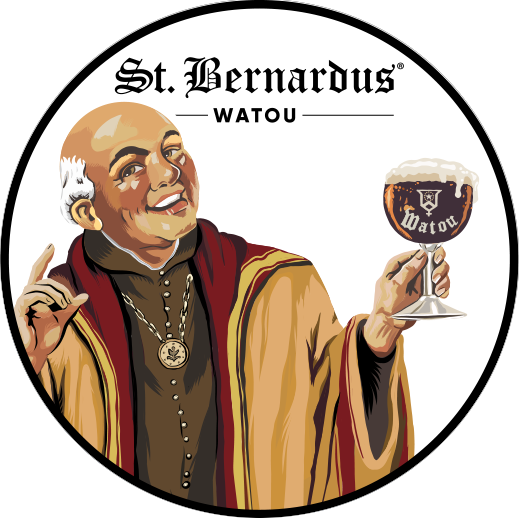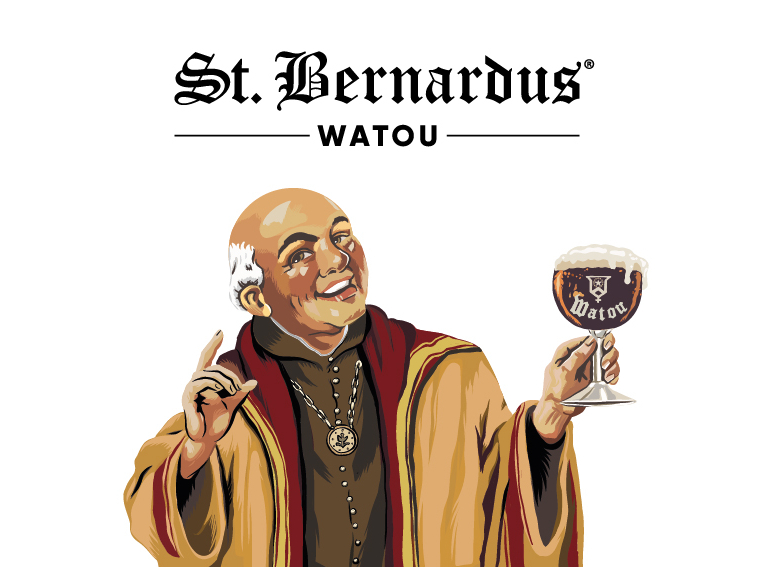1900 - 1930
In the early 1900s the Trappists fled the Mont des Cats (named after an ancient local tribe) and escaped to Watou. There they took up residence at the 'Patershof' farm (also known as 'Courtewyle'), just a stone’s throw from the current brewery. They re-named their new home the 'Réfuge de Notre Dame de St Bernard' - and it was to prove a refuge in practice as well as in name. But why did these monks come to Belgium at all? In France they had to pay tax on their revenues and that was not (yet) the case in Belgium. Safe in their new home the monks took up cheese-making.
1930 - 1934
As France took on a more tolerant attitude towards religious communities the monks of Mont Des Cats decided to cross back over the border. Their vacated dairy was taken over by Evariste Deconinck. Later the Réfuge’s site would become the property of the Bruges Public Centre for Social Welfare.
1934 - 1946
During this period Deconinck expanded the dairy. Today the Brouwershuis where they made cheese on Trappistenweg (Trappist Road) is a guesthouse. Back in the 1930s it was producing two different branded cheeses: 'St Bernard Watou' and 'Port Salut de Watou'.
1946 - 1992
Not long after the Second World War, Evariste Deconinck was invited by the Trappist monks at Westvleteren to brew and market their Trappist beers under licence, originally covering a 30-year period. Brewmaster Mathieu Szafranski (who was of Polish descent) brought his considerable know-how to the new site, bringing both recipes and the famed St Sixtus yeast as a new brewery was established right next to the cheese workshop. The cheese-making business was sold in 1959 with the equipment and the brand name going to the Poperinge milk dairy, St.Bertinus, which would later itself be acquired by the Elvapo group. In 1986 Belgomilk took over the business. In the early 1960s Guy Claus, the husband of Bernadette Deconinck (the daughter of Evariste) joined the brewery, opening up the opportunity for talks with Westvleteren Abbey to renew the licence agreement. In 1962 a new 30-year deal was signed to keep the beer flowing until 1992.
1992 - 1998
In 1992 the agreement expired for good, as the Trappist breweries had decided to award the "Authentic Trappist Beer" label exclusively to beers that had been brewed inside an abbey. From then on, the brewery’s beers were marketed under the St.Bernardus brand name. This period was marked by uncertainty as the brewery tried hard to revive its fortunes and inject new life into its brand.
1998 - 2017
Hans Depypere took over the brewery in 1998. It had become very outdated by then. Hans and his team slowly but surely revitalised the brewery. In the following decades, sales grew from a few thousand hectolitres to approximately 33,000 hectolitres in 2013 under his leadership. New facilities were required to be able to keep up with demand. In 2010, the brewery invested in a new kegging and 75cl bottling line, as well as bright beer tanks. From 2013, additional lagering tanks and fermenters were gradually installed and in 2014 a new brewing hall was added, increasing brewing capacity to more than double the volume being sold at the time. New warehouses, offices and logistics spaces arose along Trappistenweg. From 2012, the brewery offered guided brewery tours and guests could also stay the night at Guesthouse Brouwershuis. Julie Depypere began helping her father run the brewery in 2011.
2018 - 2023
In 2018, the brewery further strengthened its positioning as a destination for beer-loving tourists with the addition of an entire new wing, with room for more warehouses, a new brewery shop, spaces for events, conventions and seminars, and to cap it all off, ‘Bar Bernard’, a spectacular 360° rooftop bar plus tasting room. As of 2023, visitors can also take a Brewery Tour, a museum-style experience where they can explore the unique story behind St.Bernardus at their own pace.
At the end of 2022, a brand-new three-storey production hall opened its doors, with a bottling area for filling and packaging, more room to store boxes, glassware and other packaging materials, additional offices and a new lab. The new bottling area improved the sustainability of the production process in various ways and allowed for further logistics innovations. Another new warehouse at Sappenleen, an industrial park in Poperinge, was added in the course of 2023 as well.
As of 2023, annual sales have grown to 50,000 hectolitres, or 5 million litres in volume. Those 15 million 33cl bottles of beer are being appreciated in more than 80 countries. Approximately 55% is sold within Belgium. The United States is the largest foreign market, followed by the Netherlands and France.
In 1998, Family Depypere took over the brewery. A lot has changed since then. A continuous quest to improve and innovate the brewery, by investing in infrastructure, quality, sustainability and visitor experience.
The Craft Beer Channel
Craft Beer Channel brings stories about beer and is the world's largest YouTube channel on this topic. They visited us in 2023 and made this beautiful report.









